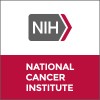
AZD2171 in Treating Patients With Recurrent Glioblastoma Multiforme
Adult Giant Cell GlioblastomaAdult Glioblastoma2 moreThis phase II trial is studying how well AZD2171 works in treating patients with recurrent glioblastoma multiforme. AZD2171 may stop the growth of tumor cells by blocking some of the enzymes needed for cell growth and by blocking blood flow to the tumor

Radiation Therapy (RT) and Temozolomide (TMZ) in Treating Patients With Newly Diagnosed Glioblastoma...
Brain and Central Nervous System TumorsRATIONALE: Radiation therapy uses high-energy x-rays to kill tumor cells. Drugs used in chemotherapy, such as temozolomide, work in different ways to stop the growth of tumor cells, either by killing the cells or by stopping them from dividing. Giving radiation therapy together with temozolomide may kill more tumor cells. It is not yet known which schedule of temozolomide when given together with radiation therapy is more effective in treating glioblastoma or gliosarcoma. PURPOSE: This randomized phase III trial is studying two different schedules of temozolomide to compare how well they work when given together with radiation therapy in treating patients with newly diagnosed glioblastoma or gliosarcoma.

VEGF Trap in Treating Patients With Recurrent Malignant Gliomas That Did Not Respond to Temozolomide...
Adult Anaplastic AstrocytomaAdult Anaplastic Oligodendroglioma3 moreThis phase II trial is studying how well VEGF Trap works in treating patients with recurrent malignant or anaplastic gliomas that did not respond to temozolomide. VEGF Trap may stop the growth of malignant or anaplastic gliomas by blocking blood flow to the tumor.

Avastin in Combination With Radiation (XRT) & Temozolomide, Followed by Avastin, Temozolomide and...
GlioblastomaGliosarcoma1 morePrimary objective: To use overall survival to assess the efficacy of the combination of radiation therapy, temozolomide and Avastin followed by Avastin, temozolomide, and irinotecan in the treatment of grade IV malignant glioma patients following surgical resection. Secondary objective: To determine the progression-free survival following the combination of radiation therapy, temozolomide and Avastin followed by Avastin, temozolomide, and irinotecan. Exploratory Objective: To explore the relationship between biomarkers and outcome (overall survival and progression-free survival) among patients with grade IV malignant glioma treated with radiation therapy, temozolomide and Avastin followed by Avastin, temozolomide, and irinotecan. To describe the toxicity of radiation therapy,temozolomide and Avastin followed by Avastin, temozolomide, and irinotecan.

FR901228 in Treating Patients With Recurrent High-Grade Gliomas
Adult Anaplastic AstrocytomaAdult Anaplastic Oligodendroglioma3 moreThis phase I/II trial is studying the side effects and best dose of FR901228 and to see how well it works in treating patients with recurrent high-grade gliomas. FR901228 may stop the growth of tumor cells by blocking the enzymes necessary for their growth

Arsenic Trioxide Plus Radiation Therapy in Treating Patients With Newly Diagnosed Malignant Glioma...
Adult Giant Cell GlioblastomaAdult Glioblastoma1 moreThis phase I trial is studying the side effects and best dose of arsenic trioxide and radiation therapy in treating patients with newly diagnosed malignant glioma. Drugs such as arsenic trioxide may stop the growth of malignant glioma by stopping blood flow to the tumor. Radiation therapy uses high-energy x-rays to damage tumor cells. Combining arsenic trioxide with radiation therapy may kill more tumor cells.

Sorafenib Tosylate and Temsirolimus in Treating Patients With Recurrent Glioblastoma
Adult GlioblastomaAdult Gliosarcoma1 moreThis phase I/II trial studies the side effects and best dose of temsirolimus when given together with sorafenib tosylate and to see how well they work in treating patients with glioblastoma that has come back. Sorafenib tosylate may stop the growth of tumor cells by blocking blood flow to the tumor. Drugs used in chemotherapy, such as temsirolimus, work in different ways to stop the growth of tumor cells, either by killing the cells or by stopping them from dividing. Sorafenib tosylate and temsirolimus may also stop the growth of tumor cells by blocking some of the enzymes needed for cell growth. Giving sorafenib tosylate with temsirolimus may kill more tumor cells.

INC280 Combined With Bevacizumab in Patients With Glioblastoma Multiforme
Glioblastoma MultiformeGliosarcoma2 moreThe purpose of this study is to determine whether the combination of two agents, INC280 and bevacizumab, is safe and effective when administered to patients with Glioblastoma Multiforme (GBM) who have progressed after receiving prior therapy or who have unresectable GBM.

Plerixafor After Radiation Therapy and Temozolomide in Treating Patients With Newly Diagnosed High...
Adult EpendymoblastomaAdult Giant Cell Glioblastoma7 moreThis pilot phase I/II trial studies the side effects and best dose of plerixafor after radiation therapy and temozolomide and to see how well it works in treating patients with newly diagnosed high grade glioma. Plerixafor may stop the growth of tumor cells by blocking blood flow to the tumor. Drugs used in chemotherapy, such as temozolomide, work in different ways to stop the growth of tumor cells, either by killing the cells or by stopping them from dividing. Radiation therapy uses high energy x rays to kill tumor cells. Giving plerixafor after radiation therapy and temozolomide may be an effective treatment for high grade glioma.

NovoTTF-100A With Bevacizumab (Avastin) in Patients With Recurrent Glioblastoma
Adult Giant Cell GlioblastomaAdult Glioblastoma2 moreNovoTTF-100A is a device and Bevacizumab is a study drug that have both been approved by the FDA (Food and Drug Administration) for use as monotherapy in treating glioblastoma multiforme. The NovoTTF-l00A is a portable battery operated device which produces TTFields within the human body using surface electrodes (transducer arrays). Intermediate frequency electric fields (TTFields) stunt the growth of tumor cells. The purpose of this study is to determine the efficacy of the combination of Bevacizumab and NovoTTF-100A in Bevacizumab naive (meaning have never received bevacizumab before) patients with recurrent glioblastoma (GBM) as measured by 6-month progression free survival.
